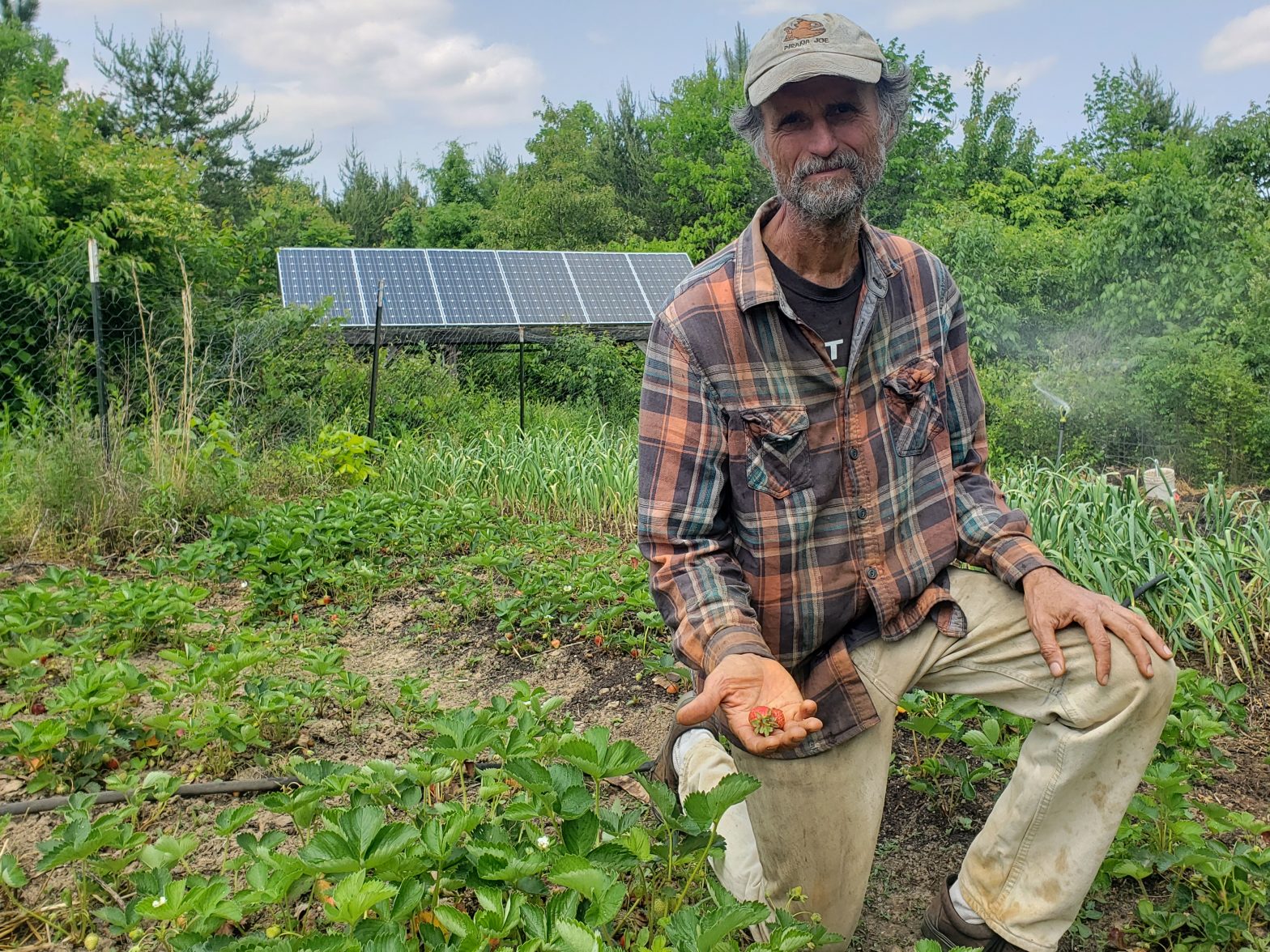In the fall of 2010, Alexis Zeigler and Debbie Piesen set out to see if they could live independent of fossil fuels. On land just north of Louisa, they started building Living Energy Farm, their vision of a self-sufficient, off-grid community with zero carbon footprint. Last March, the off-grid systems and technology they developed won honorable mention and a $5,000 prize from Empower a Billion Lives, a global engineering competition aimed at designing energy solutions for the poorest 1 billion people on the planet.
When Living Energy Farm started, Zeigler had already helped a few friends in Charlottesville build off-grid homes and worked on some engineering projects at Twin Oaks, an intentional community in Louisa County, so he had a pretty good idea of what it would take.
“All of those systems failed over time,” Zeigler says. “You buy a big battery bank, you hook it up to the inverters, and it’s expensive, it turns off, it just doesn’t work very well.”
The pair knew they couldn’t just plug in solar panels in place of natural gas and expect the system to last. Living Energy Farm needed to be designed differently to truly be sustainable. The first step was to bring their energy consumption down.
The majority of an American household’s energy consumption comes from heating and cooling. Zeigler and Piesen knew handling heat would be a key part of their design. That meant building to a community scale, since larger systems for heat storage are more energy efficient, and giving the walls 18-inch straw bale insulation.
“If you get the cooperation part right, as much shared use as you can manage, and you get the insulation right, you bring your energy use way down, and then renewable energy becomes a very powerful thing,” Zeigler says. “If you just throw renewable energy at a mainstream middle-class house, you’re doing more harm than good.”
The other key was to store solar energy in places other than batteries, which are expensive and likely to break.
Non-electric solar panels collect heat from the roof during the day and a fan blows the hot air under the floor where it is stored in the dirt and rock through the night. A water pump draws water from the well in the day and stores it in large, pressurized tanks, where it is ready to go at night. The refrigerator cools only during the day and its thick insulation keeps it cold all night.
“I can take a hot shower all year round,” Zeigler says. “It works great.”
But the breakthrough came when Zeigler realized how much more durable a direct current solar energy system is than the conventional alternating current. Everything at LEF, from the ovens to the saws, everything except lights and laptops, is powered through direct current from the solar panels with no batteries.
“Without expensive solar kits that break, I didn’t think we could keep the lights on,” Zeigler says. “I had no idea we could do what we’ve done here.”
Zeigler found that the DC system tolerates extreme voltage swings in a way that would shut down an AC system, meaning they can work on the energy supply they have, in cloudy or clear weather, and share energy among multiple devices. The devices just speed up or slow down depending on how much energy they’re getting.
“I had no idea you could do that,” Zeigler says. “With an AC motor, if you hook up an AC motor to a voltage supply that’s swinging all over the place, it’ll smoke and burn up right in front of your eyes. It won’t last 30 minutes.”
But with the DC system, Zeigler is able to run multiple motors, up to 5 horsepower, that overload his 1.5 horsepower supply, and they work just fine. Even in a heavy haze, he can run multiple devices at once. On a sunny day, he could have every device in his shop running at once.
“So, it means you can have a radically smaller system powering a bunch of different tools and it works. Can’t do that with AC,” Zeigler says. “Everything you learn as a mainstream electrician you have to unlearn with our systems. If you would have told me 15 years ago you were going to do something like this, I could have given you a very clear lecture on why it would never work.”
That system, called the Direct Drive DC Microgrid by the farm, is radically simple, affordable, and durable, Zeigler says. He believes that if more communities adopted the method, it would drastically reduce carbon output and increase energy independence.
Engineers at the Institute of Electrical and Electronics Engineers, which sponsored Empower a Billion Lives, agree—at least in some measure. The farm itself is proof of the concept.
Zeigler, however, is skeptical that mainstream engineering designs are actually headed toward progress. He argues that renewable energy products are not truly sustainable solutions.
“What’s happened is, buildings are way better insulated than they were, but we’re occupying so much more square footage, cars are more efficient but we drive more, appliances are a little bit more efficient, but we use more of them. We’re not gaining any ground at all. And sustainability is not difficult. Compared to building rocket ships and flying people to the moon and building nuclear weapons and all these things we do, it’s easy. It’s a lifestyle choice.”
LEF’s major goal for its DC Microgrid is to help more communities adopt it. They’ve installed their system on Navajo/Hopi land in Arizona, communities in Jamaica, and are currently working on a large project in Puerto Rico with organizations focused on food and energy independence.
